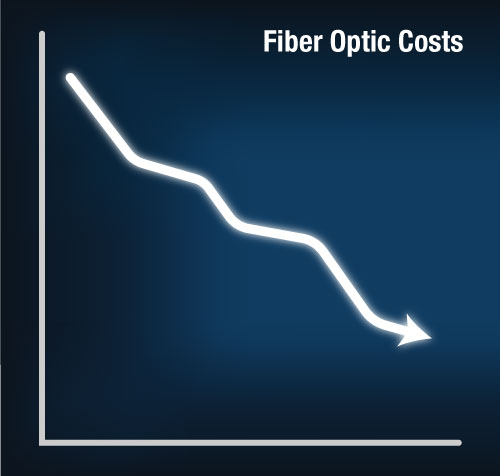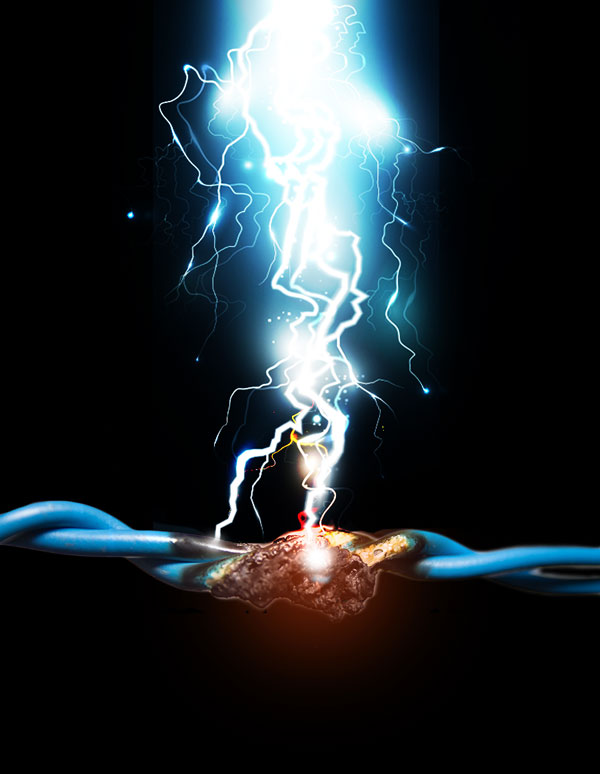Fiber Optics: Not Just for Long Distance
Ask any system designer or technician how to connect two network switches in separate buildings, install a video camera, or extend a video display over 100 meters. Nearly every time, the answer will be that fiber optic cabling is the best option. Yet if you ask what type of cabling to extend for under 100 meters the answer will probably be different. Why?
There’s a definite perception in the industry that fiber is future-proof. What often gets lost is the fact that it is also NOW-proof. Today’s fiber optic cabling is easy to terminate and secure, and its bandwidth capabilities leave copper in the dust. Certainly, fiber is the best solution for long distance installations, but it is often a better solution for shorter installations.
Fiber optic termination has a reputation for being difficult. However, newer fiber optic cable technology, such as that used in Cleerline SSF™, has allowed manufacturers to create cables that are safe to handle (no glass shards!) and quick to terminate. Today’s durable mechanical splice connectors can, with practice, be installed as quickly as an RJ45 connector, if not faster. Copper and RJ45s are solutions that everyone is used to, but fiber installation is now just as simple. It is worth the time to learn.
EMI/RF Immunity is Key
In addition to being easy, fiber has a number of benefits over copper. Namely, lightning strikes aren’t a problem when your signal is being sent down glass. Fiber is also immune to EMI/RF interference at any length. With fiber there is no need to worry about shielding or interference. Running fiber helps protect your clients’ data at any distance, and it also provides plenty of room for that data to move.
This is the part where we start talking about 4K, and then 8K. As everyone is constantly saying, bandwidth demands are continually increasing. How, without greater bandwidth, are we all going to manage to support our future even higher-quality screens, not to mention all the VR equipment? All joking aside, we are reaching the end of copper’s bandwidth capabilities. Fiber solutions are available today that will allow for 40 Gbps or even 100 Gbps demand with ease. Why not install fiber in your project, when it will handle both the demands of today’s users and provide for the demands of tomorrow?
 Fiber Optic Options Have Decreased in Price
Fiber Optic Options Have Decreased in Price
Aren’t fiber systems more expensive that copper options? Previously, fiber extenders could be prohibitively expensive, even though the costs of the actual cabling were often comparable to that of copper. However, costs for fiber optic systems, including compatible electronics, have now dropped dramatically. In the past three to five years, we’ve seen the costs for fiber baluns and extenders drop by as much as 80%, plus major increases in the variety of electronics available. To put this in perspective, this is a product cycle with great similarity to that of early copper baluns, which also decreased in price with greater industry adoption. As fiber continues to become industry standard, costs will continue to decrease as options increase. Along with all its other benefits, fiber is now a budget-compatible solution.
Fiber optic cabling is ready for any demand your system might put upon it, whether that system is running 100 feet, 100 meters or 2 kilometers. It’s the right time to consider fiber for more than just long-haul applications. You can learn more about the fiber benefits and installation in the SDVoE Academy course AV Distribution over Fiber Optics. People keep saying, “the future is now”. It’s time to get on board.



